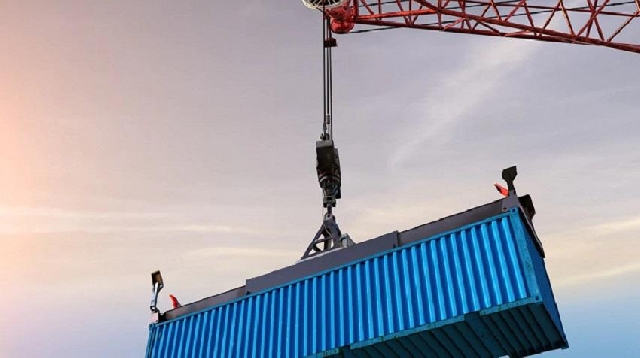Ericsson report charts smarter ports with 5G private networks
 5G-ready private cellular networks provide fast, reliable, and secure connectivity required by a smart port’s network infrastructure to handle the large amounts of data generated by cranes, vehicles, equipment, and workers.
5G-ready private cellular networks provide fast, reliable, and secure connectivity required by a smart port’s network infrastructure to handle the large amounts of data generated by cranes, vehicles, equipment, and workers.
Ports and shipping are vital for a well-functioning global economy. According to the World Bank, in 2019, trade represented more than 60 percent of the global gross domestic product (GDP). Data from The International Chamber of Shipping reveals that shipping plays by far the largest part in this, facilitating roughly 90 percent of the world’s trading. The ports of the world literally keep its goods flowing.
The comprehensive report, Connected Ports: A guide to making ports smarter with private cellular technology, outlines how challenges of equipment downtime, congested port yards for loading and unloading, worker safety, and environmental impact could be resolved with private cellular networks.
5G-ready private cellular networks provide fast, reliable, and secure connectivity required by a smart port’s network infrastructure to handle the large amounts of data generated by cranes, vehicles, equipment, and workers.
In the maritime report findings, Ericsson collaborated with leading sensor technology provider, ifm electronic, as well as researchers from management consultancy Arthur D. Little, to examine and quantify five use cases with the most beneficial applications for smart port technologies:
Remote-controlled ship-to-shore cranes load and unload container ships, moving containers between the ship and the dock with precision and maneuverability. Automated rubber tired gantry cranes stack containers at terminals, crucial for when high-capacity stacking and good maneuverability are needed. Automated guided vehicles(AGVs) navigate through the port using smart 3D sensors, handling all port materials, reducing energy costs and risk of accidents. Condition monitoring detects faults before they occur, reducing unplanned downtime and maximizing asset productivity. Drones deliver documents from ship to shore, reducing costs and environmental impact of crewed boats while also conducting security surveillance of ports.The report projects that if all of the five use cases are deployed together, complete payback can be achieved in less than two years. By year five, the report projects that the ROI would be 178 percent for our standard baseline port.
One port that is already deploying these types of smart technologies is Italy’s Port of Livorno – for example, by leveraging 5G technologies to enhance the exchange of real-time information among actors in the port’s terminal process. These applications have the potential to reduce CO2 emissions by 8.2 percent for one terminal operation.
Learn more by reading the full report, Connected Ports: A guide to making ports smarter with private cellular technology, and try the Smart Ports Value Calculator to figure out the ROI for ports deploying different use cases.
Source: Classfmonline.com
Trending News

Ghana reaffirms commitment to greener, safer maritime sector at IMO Assembly
15:42
'State support is partnership, not takeover': Catholic Bishops' Conference & Christian Council on religious freedoms at missionary school
00:22
Minority Caucus rejects court ruling nullifying Kpandai parliamentary election
06:50
MFWA's Sulemana Braimah criticises police for arresting blogger over ‘false news’
12:32
Islamic SHS: Boys Prefect Abass fatally falls from storey building
11:13
Teacher salaries: Intervene now or risk strikes, says GNAT to MoE, GES
16:38
Gov’t appeals to CETAG to call off strike
21:11
Samuel Huntor graduates with Second Class Upper honours
06:21
Speaker of Parliament renews call for comprehensive constitutional rewrite
12:19
Gender Minister Momo Lartey assures Ofankor domestic violence victim of support for she and her 2 children
11:02



